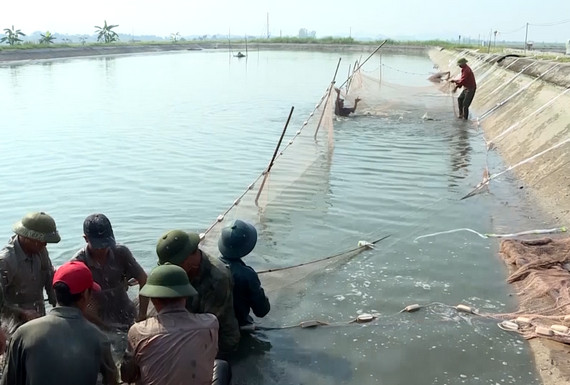Ninh Binh turns disadvantages into advantages in agricultural development

Combining cultivation with tourism
These days, a lotus pond of farmer Hoang Lien in Ninh Thang commune (Hoa Lu district) have constantly received tourists who visited and take photos with the lotus pond.
Lien said her family planted different kinds of lotuses on an area of 45 hectares, of which 35 hectares of lotuses for flower harvesting and 10 hectares for tourism services. Her family collects 100,000-200,000 VND from each visitor as "check-in" fees, bringing the family much-higher income than planting rice.
The amazing beauty of lotus ponds in Hoa Lu district is generated by the typical features of landscape with limestone mountains and vast green paddy fields.
Pham Thai Thach, Head of the Division of Agriculture and Rural Development of Hoa Lu district, said the district boasts various advantages in tourism development, but they are disadvantages in agricultural development. The district has focused on developing agriculture associated with tourism services in a bid to turn these disadvantages into advantages.
Local farmers have transformed ineffective rice fields into areas to plant new crops, raise animals or combine with ecological tourism. The planting Japanese lotus in service of tourism has been developed in Ninh Hai, Ninh Xuan, Ninh Thang and Truong Yen communes. The blooming season lasts from May to November annually. During the summer, these lotus ponds have received thousands of guests, including foreigners.
In particular, lotus leaves, seeds and bulbs are used to make healthy products. Planting lotus have helped improve income for local people here. One hectares of lotus could earn an average income of 300 million VND, five times higher than planting rice.
Recently, products from lotus in Hoa Lu district have been recognised as qualified products "Hoa Lu - Ninh Binh lotus", thus helping to diversify tourism products and promoting the growth of the green economy.
Outcomes of consent
According to Vice Director of the Department of Agriculture and Rural Development Dinh Van Khiem, Ninh Binh has issued numerous favourable policies to support the development of the agricultural economy. Thanks to these policies, total value of the agriculture sector has witnessed consecutive growth with the production value reaching nearly 150 million VND per hectare.
Numerous cultivation models and projects have been built and applied in many localities across the province.

There are 257 models of cultivation, of which 148 have been multiplied and become typical programmes of local agriculture, including a programme on linking farmers and businesses in farming organic rice. The programme was first implemented on 16 hectares and to date, it has been implemented in over 1,000 hectares of rice fields in localities. The area of planting high quality rice have been expanded constantly. Currently, high quality rice has been planted on 75% of the rice field area across the province.
The programme on transforming ineffective rice fields to cultivating other plants or rice-fish farming has yielded high economic value.
Many experts agreed that cultivation models and programmes in Ninh Binh have not only gained high economic value, but they also created conditions for Ninh Binh to speed up mechanization in agriculture, foster links between the state, businesses, scientists and farmers.
In the coming time, Ninh Binh will continue to multiply effective models and replace ineffective models in a bid to increase the efficiency of land use and improve livelihoods for farmers, thus contributing to building ecological agriculture, modern rural areas and civilized farmers.
Translated by Nguyen Thuy


